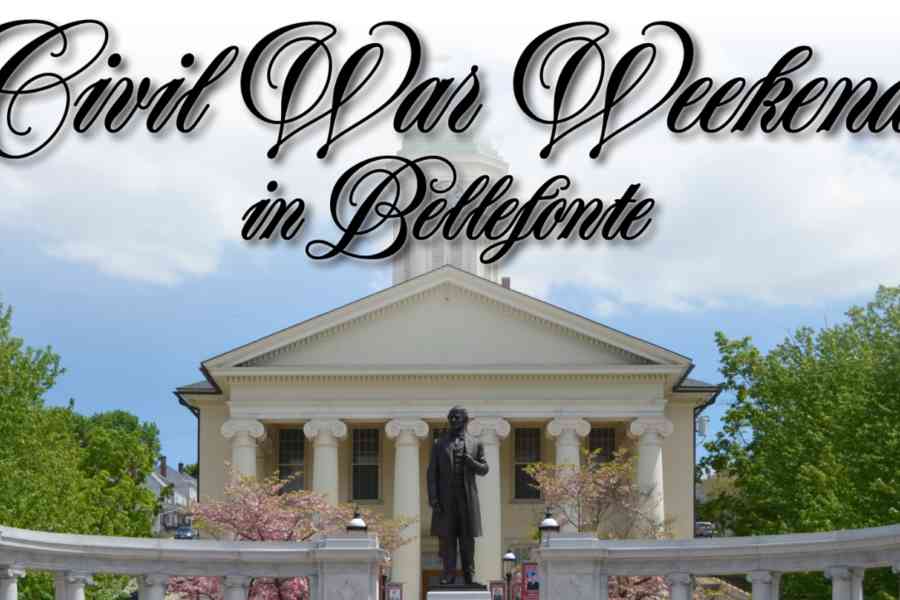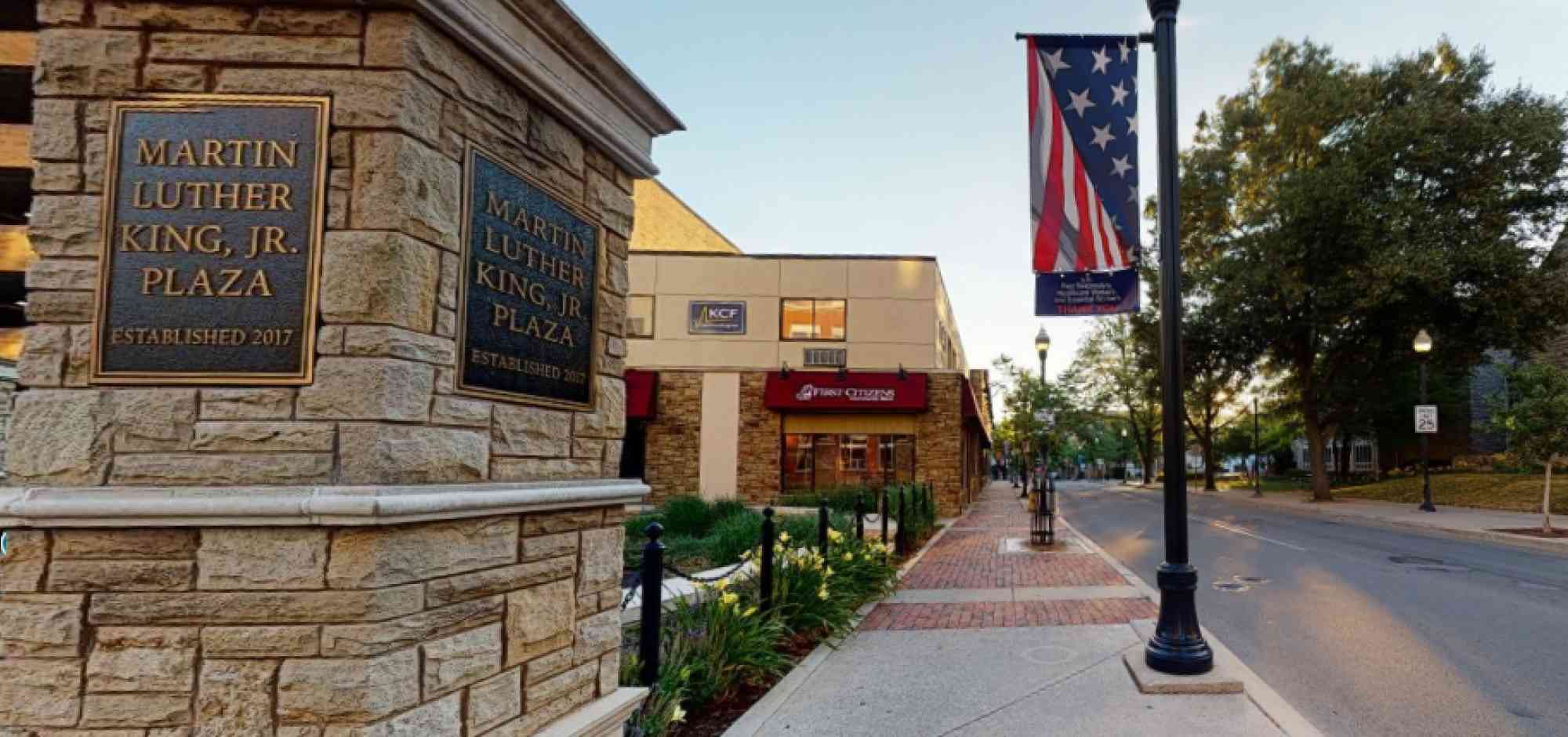
Uncovering Happy Valley's key connections to Black history
In Pennsylvania, Happy Valley’s noteworthy connections to Black history beckon study and further exploration, and serve as inspiration for future generations.
Happy Valley’s connections to pivotal moments in Black history include the celebrated 1965 speech by the country’s most influential civil rights leader, Rev. Dr. Martin Luthor King Jr., at Penn State University’s Rec Hall, and the public plaza in the heart of downtown State College that serves as a space for residents and visitors to reflect on King’s legacy. A deeper dive into the history of the small, rural village of Aaronsburg, or the picturesque county seat town of Bellefonte, reveals much more. People and events with significant ties to the abolitionist and civil rights movements are well-documented in the annals of Happy Valley’s past.
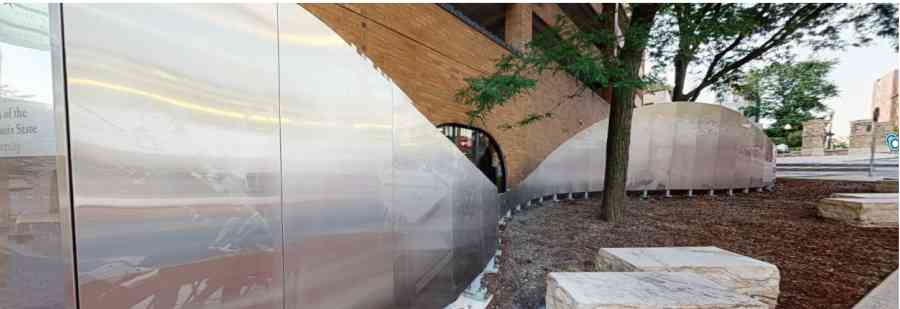
In State College, panels depict Rev. Dr. Martin Luthor King Jr.'s visit to the Penn State campus in 1965.
Bellefonte and the Underground Railroad story
Centre County and Bellefonte had significant ties to the Underground Railroad prior to the Civil War. Perhaps the most documented connection is the St. Paul African Methodist Episcopal (AME) Church on South Paul Street in Bellefonte. The late Rev. Dr. Donna King, former church pastor and abolitionist movement historian, was pivotal in telling the local Underground Railroad story. She was a beloved force in the community for educating about and preserving Black history in Centre County.
Local Historia’s Matt Maris is similarly dedicated to bringing Bellefonte’s and the county’s past to life, including the Black history that was King’s passion. His public and private walking tours are increasingly popular with locals and visitors, and cover a variety of topics. Maris touches on Bellefonte’s Underground Railroad connection in his tours, and continues his research in this field. One of the stories he is always sure to tell on walking tours is that of Henry Thomas.

The late Rev. Dr. Donna King was devoted to preserving Black history in Centre County, and regularly led tours of local stops on the Underground Railroad.
Henry Thomas was a “runaway slave” who escaped to Bellefonte after being enslaved in Maryland or Virginia. He was employed in a hotel, what is now the Brockerhoff House on South Allegheny Street. In 1856, two southern agents came to Bellefonte looking for Henry. Under the Fugitive Slave Law of 1850, aka the Bloodhound Law, it was legal to retrieve runaway “property.” The men acquired Henry to assist in local directions. Once in their carriage, they bound him up with cords and headed south toward Huntingdon. Andrew Gregg Curtin – a Bellefonte lawyer and politician who would serve as Pennsylvania governor during the Civil War – was just arriving into town when locals alerted him that Henry had been taken. Curtin rounded up “a posse of men of his own sentiments” and went in pursuit of Henry and his captors. Unfortunately, the mission was unsuccessful and Henry was remanded into slavery. Maris said this story is a reminder of how Black Americans were in very real and constant danger of enslavement, even in a small town in central Pennsylvania.
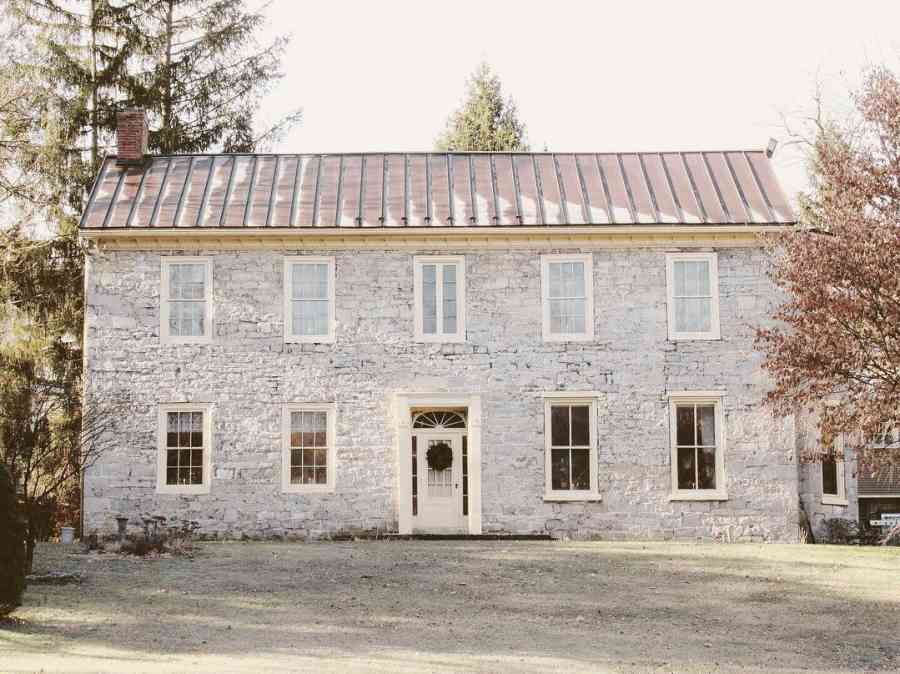
The church on the hill
The Henry Thomas story also sheds light on the local abolitionist movement and the people who helped shelter those on their journey to freedom in the North. The St. Paul AME Church is at the center of the area’s Underground Railroad story.
Bellefonte's "Church on the Hill" is an impressive 1859 brick church with an impactful history. In fact, the very lot the church was built upon was donated and deeded to the church by a well-known Underground Railroad supporter, ironmaster and Quaker, William A. Thomas. Thomas even personally purchased the freedom of a former enslaved family and helped shelter runaway slaves in his beautiful home (above right), which dates back to pre-1785. Located on North Thomas Street, it is the oldest standing property in Bellefonte still today. St. Paul served as a spiritual and physical refuge for the enslaved. We know much of what we do today because of one of its most influential members and leaders, William H. Mills, who extensively documented the church’s history.
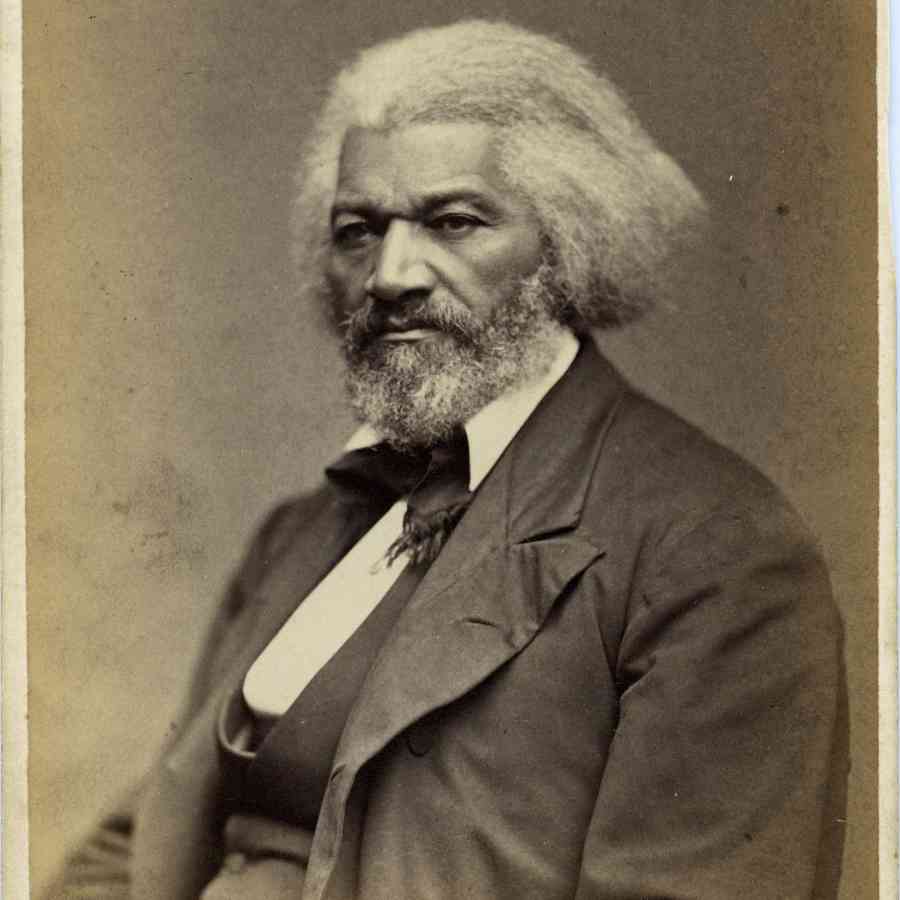
The Great American abolitionist, Frederick Douglass
William Mills, Frederick Douglass, and an inspirational encounter
A historical marker outside of what is now Governor’s Pub on West High Street, indicates that the site was once a barber shop operated for 60 years from 1871 to 1931 by William Mills, the grandfather of the internationally renowned Mills Brothers.
A musician and Jubilee singer himself, William Mills was foremost a prominent leader in Bellefonte’s African-American community. Historians and authors credit Mill’s chance encounter with the great American abolitionist Frederick Douglass as the catalyst for taking on this role. Douglass visited Mills’ barbershop for a haircut when he was in town for a speaking engagement, and Mills later attended Douglass’ Bellefonte talk.
In 1885, Mills and other black citizens persuaded the Bellefonte School Board to integrate the public schools. Desegregation became a reality two years later, making Bellefonte one of the nation's earliest school systems to integrate - 67 years before the U.S. Supreme Court ordered the same for the nation's public schools.
- Pennsylvania Heritage Magazine in an article written by Daniel Clemson
In 1885, Mills and other black citizens persuaded the Bellefonte School Board to integrate the public schools. Desegregation became a reality two years later, making Bellefonte one of the nation's earliest school systems to integrate - 67 years before the U.S. Supreme Court ordered the same for the nation's public schools.
Source: Pennsylvania Heritage Magazine in an article written by Daniel Clemson
Bellefonte Art Museum tells of the journey to freedom
A permanent exhibit at the Bellefonte Art Museum contains information about the operations of the Underground Railroad, art work depicting the courage and suffering of the enslaved African Americans, and stories about the local citizens who helped and supported them. The historic home that houses the museum on North Allegheny Street was once a location that sheltered people trying to escape slavery.
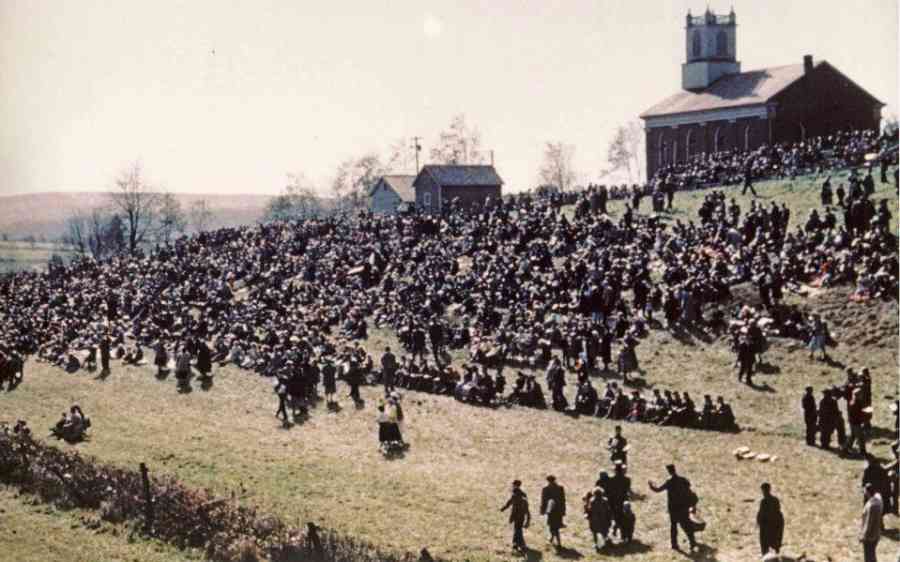
Tens of thousands show up in Aarsonsburg in 1949 to promote racial and religious tolerance.
The Aaronsburg story
Sometimes history is made where you least expect. Founded in 1786, Aaronsburg is a historic, rural village in Penns Valley in the southeast part of Centre County. Seemingly out of place in the charming, unassuming town is a historical marker noting a time when Aaronsburg found itself on the world stage for a “heritage of tolerance” promoted by its founder nearly 160 years prior. In the fall of 1949, nearly 40,000 gathered on the grounds of Salem Lutheran Church to commemorate the ideals of tolerance and celebrate religious and racial understanding.
“The history of Aaronsburg typifies what this nation and the world are trying to do in erasing intolerance of religion, race and color.” said James H. Duff, governor of Pennsylvania from 1947-51.
“The history of Aaronsburg typifies what this nation and the world are trying to do in erasing intolerance of religion, race and color.”
- James H. Duff, governor of Pennsylvania from 1947-51.
The gathering welcomed an impressive group of prominent figures, from governors and activists from the National Urban League, to the vice president of the United Nations General Assembly, who was a minister of foreign affairs for the government of Pakistan. The outdoor pageant that is now referred to simply as The Aaronsburg story garnered the attention of the New York Times. A reporter wrote: “Aaronsburg’s great day, in its wide significance, was a great day for all of us.”
Dedicated in 1977, the historical marker commemorating the event is located on the Route 45 on the East End of Aarsonsburg.
Source: ExplorePA.com.
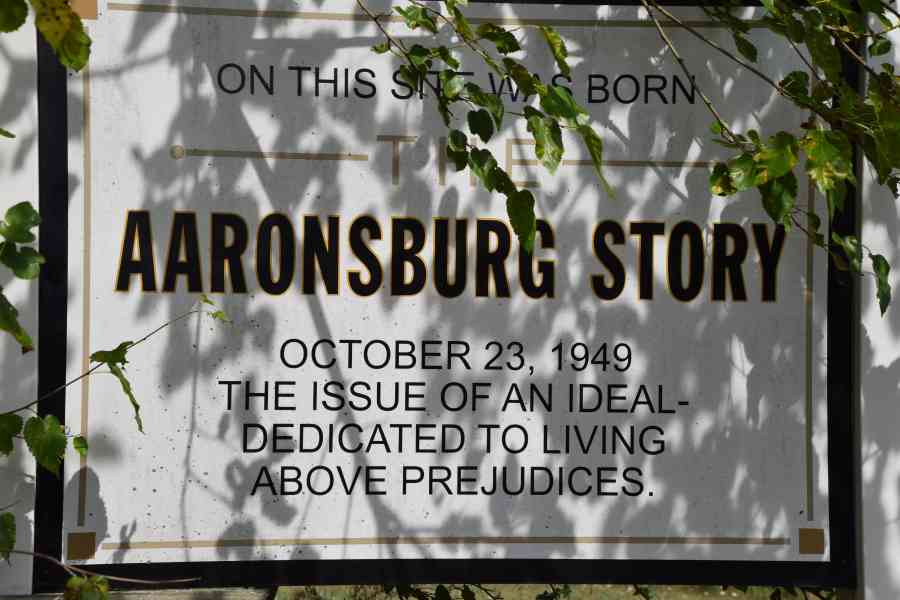
A sign at the east end of Aarsonsburg marks the location of the historic 1949 gathering.
Remembering Rev. Dr. Martin Luthor King Jr.
On Jan. 21, 1965, Rev. Dr. Martin Luthor King Jr. spoke to a crowd of nearly 8,000 people at Penn State University’s Rec Hall about the civil rights movement, America’s legacy of slavery and segregation, the beneficial impact of non-violent protests, and the principles he believed would change the world. Dr. King’s Penn State visit took place two days after he was assaulted by a segregationist in Alabama, and two months after being awarded the Noble Peace Prize. Campus events commemorated the 50th anniversary of the historic visit in 2015.
“Yes, we shall overcome, because the arc of the moral universe is long but it bends toward justice.” said Rev. Dr. Martin Luthor King Jr., speaking on the Penn State campus in 1965.
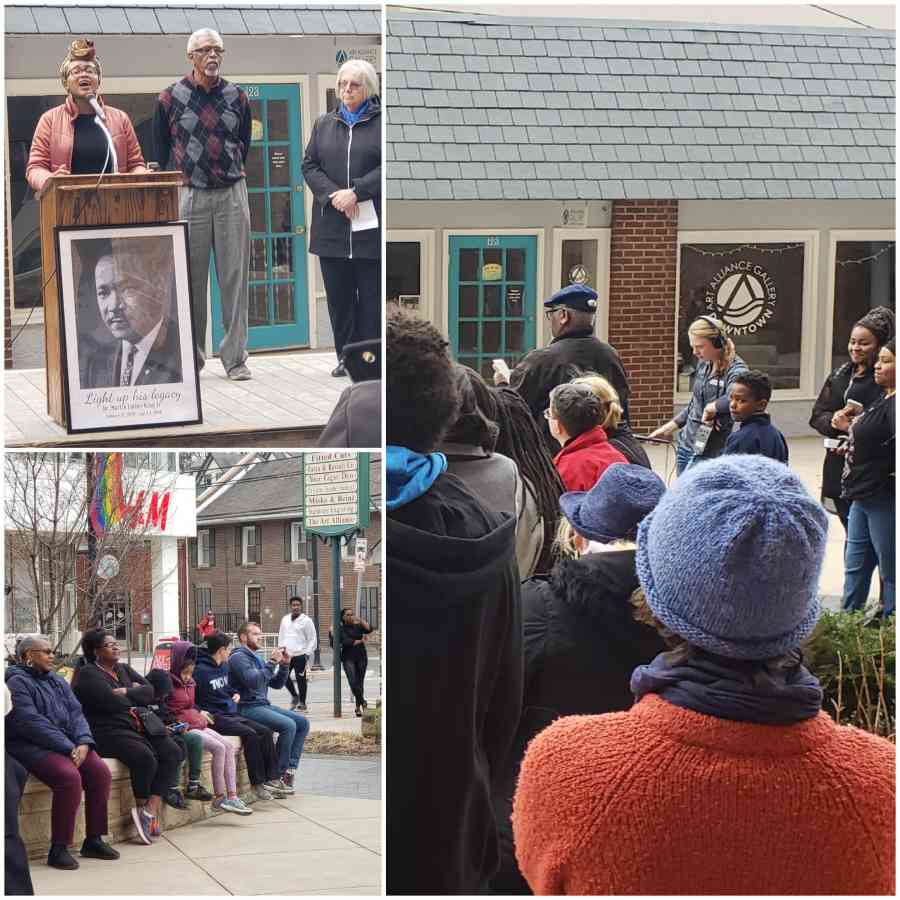
The Rev. Dr. Martin Luthor King Jr. Plaza provides a space to bring the community together.
Images from the visit, along with key moments in the civil rights movement, are featured today in downtown State College’s Rev. Dr. Martin Luthor King Jr. Plaza on South Fraser Street. The plaza was formally dedicated on Aug. 28, 2017, the 54th anniversary of the 1963 March on Washington for Jobs and Freedom, where Dr. King first gave his historic “I Have a Dream” speech. Many community leaders who were instrumental in making the vision for the public plaza a reality where in attendance at the march. The plaza is both a place to reflect and remember, as well as celebrate the richness of human experience and justice commitments. Future plans for the plaza include four dedicated annual events specific to the legacy of the space – Jan. 15, Rev. Dr. Martin Luthor King Jr. Day; April 4 – the assassination of Dr. King; June 19 – the emancipation of African-Americans from slavery; and Aug. 28 – commemorating the March on Washington.
Happy Valley’s connections to Black history beckon study and exploration today, and serve as inspiration for current and future generations.
Special thanks to Matt Maris, Local Historia LLC, who contributed to this article, and to Maris and Penns Valley historian Vonnie Henninger for providing some of the photos featured above.

